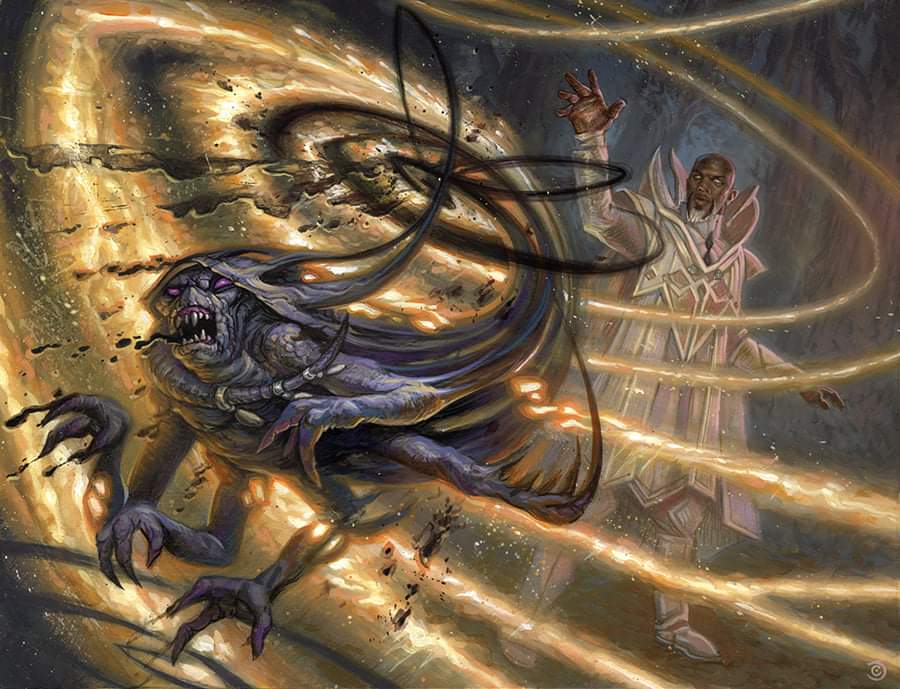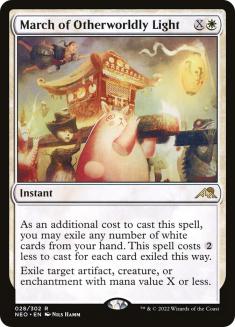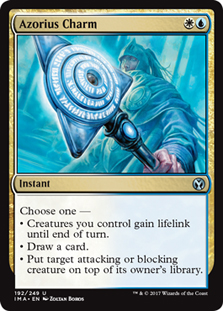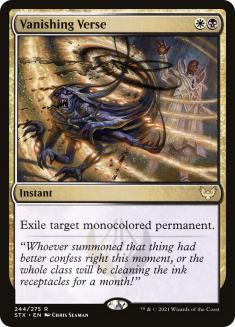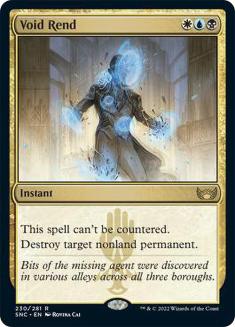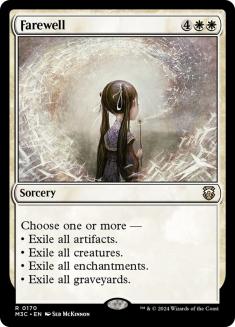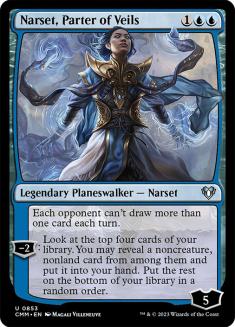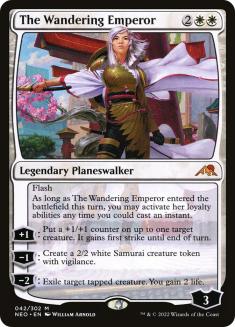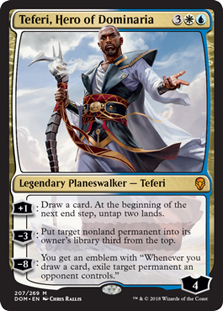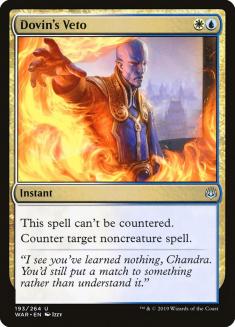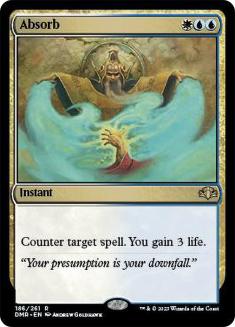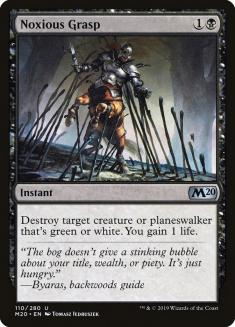Streets of New Capenna has provided control players across all competitive formats the tools to make Esper Control viable. I was optimistic coming in with these additions, anticipating the biggest impact being made on the newer formats. The Esper cards from Streets of New Capenna have singlehandedly resurrected the archetype in Standard, while offering competitive advantages for those willing to add a third color in other formats. Azorius Control is king in Modern, Pioneer, and Historic, so the addition of black spells is far from automatic.
A Quick Modern Recap
I provided you all with my take on Esper Control in Modern last week, and I have thoroughly enjoyed playing it this week. The strongest addition there was the fetchable Raffine’s Tower, giving Azorius Control an easy outlet to produce black mana in the early-game with reasonable consistency. Although fetchlands do not exist in the newer formats, Raffine’s Tower is a four-of that has made the manabase functional.
The issue with playing Esper over Azorius Control in Modern is the strength of removal. The white-based removal in the format is lights-out, arguably making the inclusion of black unnecessary. There are some powerful three-cost modal spells and card draw that add appeal to the three-color option; however, I am not convinced it is a superior alternative to sticking with two colors. Metagames shifts in Modern can change the needs of Azorius Control, making the dependence on Solitude, March of Otherworldly Light, and Prismatic Ending risky. If that occurs, black disruption may be called into service to take on those new challenges. In the meantime, I will continue to tweak Esper Control toward optimization, while having a perfectly constructed Azorius Control list to fall back on.
The Pioneer Version
The Esper Control fever has led to additional lists, one in Pioneer and one in Standard. Today we are looking at Pioneer, with the Standard version being the topic of next week.
Pioneer has recently rivaled Modern in popularity and is also the format that will host the return of live professional play. I am a huge fan of the format and control’s viability there. Since the conception of the format, Azorius Control has been a force to be reckoned with. The powerful Azorius-based control cards from older Standard formats were reunited, providing reasonable disruption with powerful planeswalkers.
It had difficulties with must-kill creatures in the early-game, though, as it relied on Azorius Charm to handle them. As much as I love Azorius Charm, it is far from an ideal removal spell. This is especially true in today’s metagame, with creatures having plenty of enters-the-battlefield triggers and detrimental effects that do not require attacking. Luckily for Azorius Control, some of the recent Modern removal spells also landed in Pioneer.
March of Otherworldly Light was a game-changer for Azorius Control in Pioneer. With that, it has been able to compete with early-game pressure, while also being effective later. Azorius Control has had high finishes since the upgrades hit, yet it lacks the disruption power to be a top deck to beat.
The New Esper Control
Control in Pioneer was the first place I looked to make the switch from two- to three-color control, to shore up some matchups that have been struggles in the past.
Planeswalkers (11)
Lands (36)
Spells (33)
- 3 Absorb
- 3 Supreme Verdict
- 2 Dovin's Veto
- 2 Oath of Kaya
- 4 Omen of the Sea
- 3 Shark Typhoon
- 3 Vanishing Verse
- 3 Memory Deluge
- 4 March of Otherworldly Light
- 2 Farewell
- 4 Void Rend
Sideboard

I tend to be a control purist, usually not dabbling in the art of 80-card decks. Still, it is impossible to deny the power of Yorion, Sky Nomad, especially in Modern and Pioneer. The extra card in the control player’s hand, blink effect, large body, and easy deck design sold me on its inclusion in Pioneer.
The manabase of this Esper Control deck is pristine, even without the strength of fetchlands. There are plenty of shocklands, checklands, and now Raffine’s Tower, to ensure that all three colors are available in the early-game. This is still primarily an Azorius-based control deck, with black filling the weak gaps with cards old and new. Some of these control cards I have wanted to play in Pioneer for a while, but the mana has been restrictive. With Raffine’s Tower, the floodgates have opened to provide choice to control players.
Greatest Hits
This Esper Control list has some of my favorite control cards from the past few years. Having access to Yorion makes it possible to play cards like Omen of the Sea and Oath of Kaya, two cards that would not have otherwise made the cut. Both of their effects are strong enough to warrant use in their respective Standards, with the first providing a quality card after some initial scrying. Omen of the Sea also has a late-game effect, with a sacrifice effect to scry once again. The impressive part is the card advantage it brings with Yorion hits the battlefield, which is why it is in the deck.
The same goes for Oath of Kaya, which hits a target with a Lightning Helix upon entering the battlefield. It also bolsters life when opponents’ attackers swarm our planeswalkers, an added benefit that I miss the most from playing this in old Standard. Having Yorion to blink these two permanents is what puts them over the edge, and they are reunited in the same deck because of the repaired manabase.
Verses and Voids
The largest weaknesses in Azorius Control’s game centered around its disruption. The Azorius Charm dilemma had some relief with March of Otherworldly Light, but that has not been enough. Adding Vanishing Verse and Void Rend provided control users powerful removal they were missing. Vanishing Verse is an all-star from the past that I knew would see heavy use if the color combination was viable. Now that Esper Control has the tools for success at its disposal, Vanishing Verse is one of many black-based control cards that will see increased play.
Void Rend is the undisputed captain of the removal team for Esper Control. It does not fit the curve as cleanly as Vanishing Verse; however, it destroys nearly any permanent that the format can throw at it. There is a pile of creatures, enchantments, planeswalkers, and artifacts that Vanishing Verse cannot touch, which increases the stock of Void Rend. The additional mana is offset by its guaranteed resolution, a perk that is extremely relevant in Pioneer. Many of the mirror match losses center on a Teferi, Hero of Dominaria protected by a Dovin’s Veto. Void Rend changes the dynamic of that matchup significantly. There are few targets this removal spell cannot take down, which is where Vanishing Verse can assist with exile. The combination of these removal spells creates a line of defense that has not existed for control decks in Pioneer.
Sweepers
The sweeper package of Esper Control is powerful enough to take down the toughest aggro decks. I went back and forth with adding Fatal Push to complement these sweepers, but it did not perform as intended. Not having many untapped sources of black greatly limits the power of Fatal Push, making it a mediocre Turn 2 play most of the time. At that point, Vanishing Verse and March of Otherworldly Light can carry the mantle of responsibility.
Even if the removal spells of the early-game get overwhelmed, Esper Control can lean heavily on the five maindeck sweepers. Supreme Verdict is still the best, but Farewell is not far behind it. The Azorius sweeper needs little justification, as it is a clean four-cost spell that takes out most creatures with ease. It has been the staple sweeper wherever it’s legal for years, making its inclusion here a no-brainer.
Farewell has a high mana value of six, but it performs a knockout upon resolution. Not only does it eliminate creatures, it also hits artifacts, enchantments, and graveyards. Doing any number of these effects, all at once, makes it one of the most versatile sweepers of all time. It has been a nemesis to opposing players in Pioneer, Historic, Alchemy, and Standard since it arrived. In this version of Esper Control, it plays a pivotal role in the late-game, providing a clean out if things have gotten out of hand.
Planeswalkers
The rest of the maindeck contains the usual suspects that one would expect from a control deck in Pioneer. I am not leaving home without Narset, Parter of Veils; Teferi, Hero of Dominaria; and The Wandering Emperor. All these planeswalkers have proven themselves in Pioneer and beyond. Yorion provides additional incentive to play as many planeswalkers as possible, hardly a difficult task when the quality is this strong.
I do mourn the loss of my best friend, Teferi, Time Raveler. It was a good decision to remove him from Pioneer, and at least we can utilize him in Modern. The other planeswalkers can carry the control torch with ease, either in Azorius or Esper Control.
Counterspells
Dovin’s Veto and Absorb are the two counterspells I play in Esper Control. Certain metagame shifts would prompt me to play additional blue disruption, but the format is currently too aggressive. The limited counterspells are offset by the powerful removal spells against decks that threaten with scary permanents. In similar fashion, the plentiful win conditions makeup for it in the control matchups. Shark Typhoon and each planeswalker present deadly singular threats to the slower decks, allowing us to skimp on the amount of countermagic we employ. Enhancing the strong spells of this deck, Memory Deluge is the control staple that creates raw card advantage.
The sideboard of Esper Control addresses the weaker matchups that we are likely to face. Capping off the Dovin Veto count is mandatory, as it is the best accessible counterspell the format has to offer. There are very few control decks out there that do not use Dovin’s Veto if it is a legal option, with Esper Control in Pioneer being no different. I have seen some folks run a Negate in the sideboard before the fourth Dovin’s Veto, but that “easier to cast” reasoning is not applicable here. Esper Control has the manabase to incorporate a host of spells that require black while also casting the Azorius staples.
Sideboard Staples
Rest in Peace is the other non-negotiable sideboard card for any control deck with access to white. It is the most powerful graveyard hate spell ever and hits the battlefield for only two mana. The effect gained from that cost is the steal of the century, as it nearly eliminates any chance for a graveyard-based opponent to win the game.
In Yorion control decks in Pioneer, I like playing four copies of this card. Finding it early is vital against decks like Rakdos Sacrifice. I cannot believe I am still playing against Witch’s Oven in the middle of 2022, but here we are. If decks like that stick around, Rest in Peace is not going anywhere.
The rest of the sideboard contains dedicated hate against aggro decks, with some spells being specific against certain colors. Noxious Grasp and Aether Gust are beautiful creations that will pay dividends to control players for years to come. Aether Gust is the Modern all-star, with decent scope in Pioneer. Noxious Grasp is less played in other formats but is great in the current Pioneer metagame.
These color-specific hate cards will continue to be in every sideboard where I can legally play them, providing powerful answers to a range of different decks each time. Having a card that can kill a white aggressive one-drop while also hitting Teferi, Hero of Dominaria is special. The other anti-aggro cards include Oath of Kaya, Sunset Revelry, and an additional Farewell. Each card adds to the consistency of Esper Control against Pioneer creatures.
I am excited to continue to give this deck reps and believe it may be stronger than its Azorius Control counterpart. See you all next week with Esper Control in Standard!

